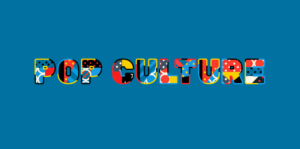“Transformaciones” es el título que le he dado a un grupo numeroso de publicaciones que he recopilado a lo largo de mi vida siendo aficionado a los comics, y que iremos compartiendo paulatinamente dentro de este blog. Algunas de ellas datan de décadas atrás y en los albores del Internet como plataforma de expresión escrita, incluyendo artículos de opinión, entrevistas y contribuciones esenciales en los años mozos de la “blogósfera”, repleta de voces con gran poder y con algo que decir acerca de este hobby que tanto nos apasiona. Todas ellas diseccionan al mundo de los comics desde diferentes aristas y matices. Algunos de ellos representan un retrovisor bastante interesante, y necesario para entender a su evolución como manifestación de las artes y plataforma multi-género. Sin mayor preámbulo, continuamos…
La idiosincrática G. Willow Wilson irrumpió en el comic comercial en el ya lejano 2007 con comics alternativos como “Cairo” y “Air” (ambos ilustrados por M. K. Perker), y desde entonces se convirtió en una voz con un sello distintivo que le permitió un fácil crossover como novelista de ficción. Dicha sensibilidad le permitió inyectar un sentido de novedad y atrevimiento a un comic como “Ms. Marvel” en 2014, el cual sin temor a equivocarnos fue el estandarte de una verdadera revolución cultural en un nicho tan cerrado y tradicionalista como el superhero comic, siendo anatema con las prácticas, tendencias y barreras autoimpuestas que le han robado al comic mainstream la posibilidad de llegar a otras latitudes y audiencias.

Publicado originalmente en su blog el 1 de abril de 2017, Wilson ofreció un comentario bastante elocuente que ponderó la difícil transición del Noveno Arte hacia una verdadera libertad de contenidos y la aceptación de lo contracorriente, en donde la diversidad, la autenticidad y el realismo se volvió un tópico muy espinoso y en curso de colisión con el gatekeeping que mantiene atrofiada a esta industria.
– – – – – – – – – –
So about that whole thing.
LONG COMIC BOOK RANT INCOMING:
Okay some things need to be said:
1. If you’re going to write a smug thunk-piece about the “failure” of “diversity” in comics, maybe don’t use the cover image of a book that’s had 4 collections on the NYT graphic books bestseller list, won a Hugo and cleaned up at Angouleme. Just because you HOPE it’s on the chopping block, oh Riders of the Brohirrim, doesn’t mean it is.
2. I will tell you exactly why Ms. Marvel works: it didn’t set out to be Ms. Marvel. We were originally going to pitch it as a 10 issue limited series. I had a 3 issue exit strategy because I assumed we were going to get canned. There was no “diversity initiative” anywhere—getting that thing made at all was a struggle. It was a given that any character without AT LEAST a 20-year history would tank. Everybody, myself included, assumed this series was going to work out the same way.
3. That freed us—by “us” I mean the whole creative team—to tell exactly the story we wanted to tell. We had nothing to lose, nothing to overcome but low expectations. That gave us room to break a lot of rules.
STUFF THAT IS DIFFICULT TO REPLICATE AND IMPOSSIBLE TO PLAN:
1. Unexpected audiences. We are at a point in history when the role of religion is at a tremendous inflection point. What I didn’t realize was that the anxieties felt by young Muslims are also felt by young Mormons, evangelicals, orthodox Jews, and others. A h-u-g-e reason Ms. Marvel has struck the chord it has is because it deals with the role of traditionalist faith in the context of social justice, and there was–apparently–an untapped audience of people from a wide variety of faith backgrounds who were eager for a story like this. Nobody could have predicted or planned for that. That’s being in the right place at the right time with the right story burning a hole in your pocket. Plenty of other stuff I’ve written and liked has fallen with a huge thud. That’s the norm. Exceptions are great when they happen, but hard to plan.
2. The paradox of low expectations. The bar was set pretty low for Ms. Marvel, but because of Ms. Marvel’s success, that bar got set much higher for similar books that came later.
STUFF THAT IS ENTIRELY AVOIDABLE:
1. This is a personal opinion, but IMO launching a legacy character by killing off or humiliating the original character sets the legacy character up for failure. Who wants a legacy if the legacy is shitty?
2. Diversity as a form of performative guilt doesn’t work. Let’s scrap the word diversity entirely and replace it with authenticity and realism. This is not a new world. This is *the world.*
3. Never try to be the next whoever. Be the first and only you. People smell BS a mile away.
4. The direct market and the book market have diverged. Never the twain shall meet. We need to accept this and move on, and market accordingly.
5. Not for nothing, but there is a direct correlation between the quote unquote “diverse” Big 2 properties that have done well (Luke Cage, Black Panther, Ms. Marvel, Batgirl) and properties that have A STRONG SENSE OF PLACE. It’s not “diversity” that draws those elusive untapped audiences, it’s *particularity.* This is a vital distinction nobody seems to make. This goes back to authenticity and realism.
AND FINALLY:
On a practical level, this is not really a story about “diversity” at all. It’s a story about the rise of YA comics. If you look at it that way, the things that sell and don’t sell (AND THE MARKETS THEY SELL IN VS THE MARKETS THEY DON’T SELL IN) start to make a different kind of sense.





